ChatGPT:
Anglesey (Ynys Môn in Welsh) is the largest island in Wales and the seventh-largest in the British Isles, located off the northwest coast of Wales. It is separated from the mainland by the Menai Strait, which is crossed by two iconic bridges: the Menai Suspension Bridge (completed in 1826) and the Britannia Bridge (completed in 1850, later rebuilt and modernized).
Geography and Landscape
Anglesey is known for its stunning coastal scenery, sandy beaches, rolling countryside, and quaint villages. The island is part of the Anglesey Area of Outstanding Natural Beauty (AONB), covering much of its coastline, which features dramatic cliffs, caves, and rich wildlife, including seals and seabirds.
Historical Overview
• Prehistoric Era: Anglesey has a rich prehistoric heritage, with numerous ancient monuments such as standing stones, burial chambers (e.g., Bryn Celli Ddu), and Iron Age hill forts. These suggest the island was an important cultural and religious center.
• Druids and Roman Conquest: During the Roman period, Anglesey was considered the last stronghold of the Druids, who held significant influence in ancient Celtic Britain. In AD 60, the Romans, under Suetonius Paulinus, launched a brutal campaign to subjugate the island and destroy the Druids’ power.
• Medieval Period: The island became an important stronghold of the Welsh princes, particularly the Kingdom of Gwynedd. In 1282, Edward I of England conquered Wales, including Anglesey, and built Beaumaris Castle as part of his campaign to assert control over the region.
• Tudor Era: Anglesey played a significant role in the rise of the Tudor dynasty. Henry Tudor (later Henry VII), whose family had strong Welsh roots, gained support in Anglesey before his ascent to the English throne.
• Industrial Era: The 18th and 19th centuries brought economic changes to Anglesey. The construction of the Menai Suspension Bridge improved connectivity, and industries such as copper mining at Parys Mountain and agriculture flourished.
Modern Development
Today, Anglesey is a peaceful and picturesque destination, focusing on tourism, agriculture, and renewable energy. The island is a hub for outdoor activities such as hiking along the Anglesey Coastal Path, birdwatching, and watersports.
Cultural Significance
Anglesey retains a strong Welsh identity, with the majority of its residents speaking Welsh. The island has inspired poets, artists, and historians and hosts several cultural events celebrating Welsh heritage.
Economic and Environmental Efforts
Anglesey is positioning itself as an “Energy Island,” with projects focusing on nuclear energy (Wylfa Newydd), wind farms, and marine energy. These efforts aim to balance development with environmental conservation.
Legacy
Anglesey’s mix of natural beauty, ancient history, and modern innovation makes it a unique part of Wales and a symbol of the enduring cultural and historical significance of the Welsh islands.
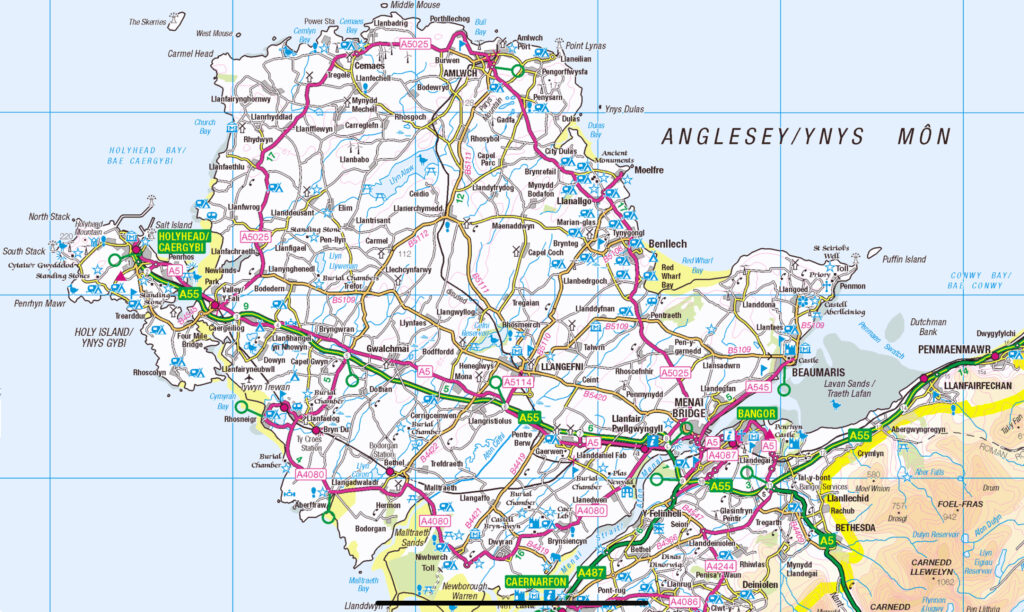
Beaumaris Castle, located on the Isle of Anglesey in Wales, is a masterpiece of medieval military architecture and a UNESCO World Heritage Site. It is part of the “Castles and Town Walls of King Edward in Gwynedd” World Heritage listing, which also includes Caernarfon, Conwy, and Harlech castles. Beaumaris represents one of the finest examples of concentric castle design, embodying the height of medieval engineering.
Origin and History
• Construction (1295):
Beaumaris Castle was begun in 1295 under the orders of King Edward I during his campaign to conquer Wales. It was designed by Edward’s chief architect, James of St. George, a renowned military engineer. The castle was part of Edward’s “iron ring” of fortifications to subjugate the Welsh people and secure English rule.
• Unfinished State:
Although Beaumaris was intended to be the most formidable of Edward’s castles, construction was never completed due to financial constraints and the shifting priorities of Edward’s campaigns. Despite this, what was built is considered an architectural triumph.
• Concentric Design:
The castle features a symmetrical, “concentric” design with two lines of fortification. The outer wall has 16 towers and two gatehouses, while the inner wall, higher and thicker, encloses a spacious courtyard. A moat encircles the castle, and its access points were heavily fortified with barbicans. This design was highly innovative, allowing defenders to stage layered defenses.
• Name and Location:
The name “Beaumaris” derives from the Norman French “beau marais,” meaning “beautiful marsh,” reflecting its location on a tidal marshland. Its strategic placement near the Menai Strait allowed control over maritime access to Anglesey.
• Decline and Later Use:
The castle saw limited action and fell into disrepair after Edward’s conquest. During the English Civil War (1642–1651), it was briefly garrisoned but was ultimately abandoned. In subsequent centuries, it became a picturesque ruin and an attraction for antiquarians.
Legacy
Although incomplete, Beaumaris Castle remains a testament to the ingenuity and ambition of medieval architects. Its grandeur and historical significance continue to captivate visitors and scholars, making it a cornerstone of Anglesey’s and Wales’s historical narrative.
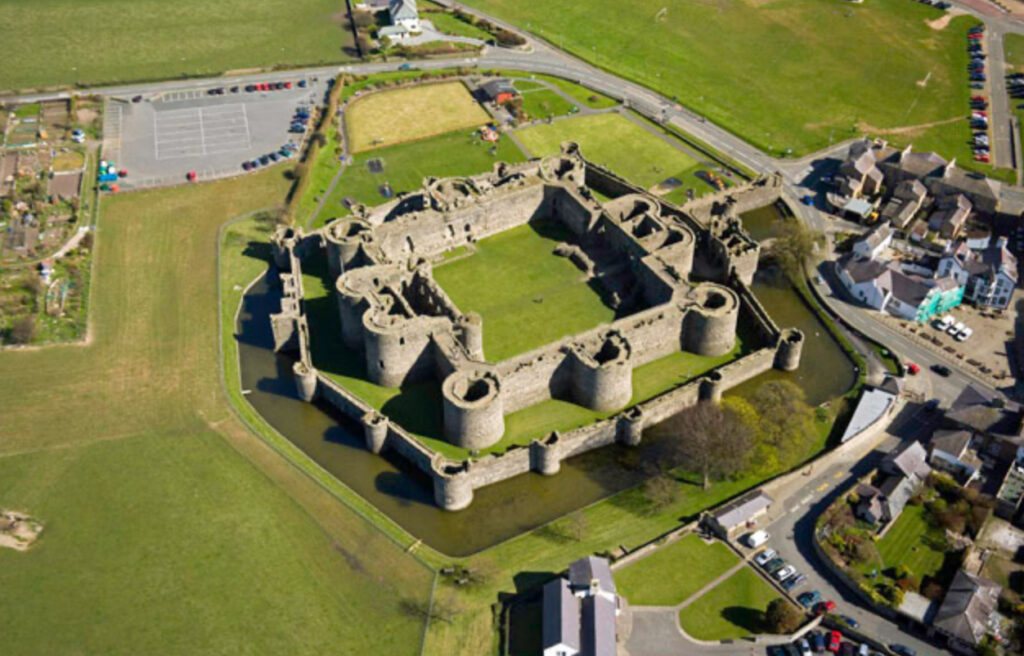
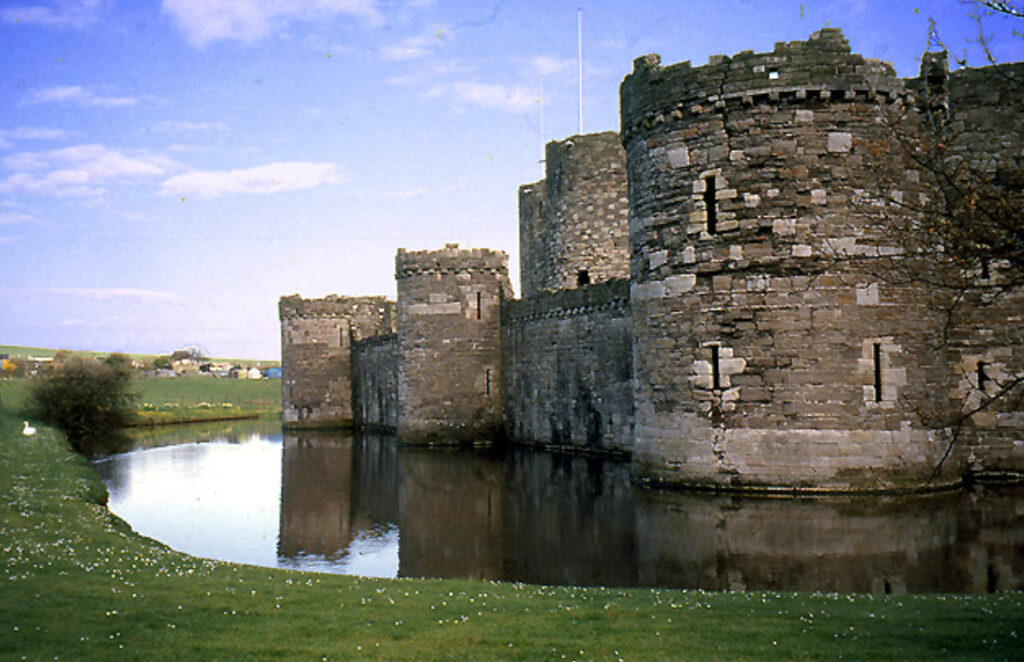
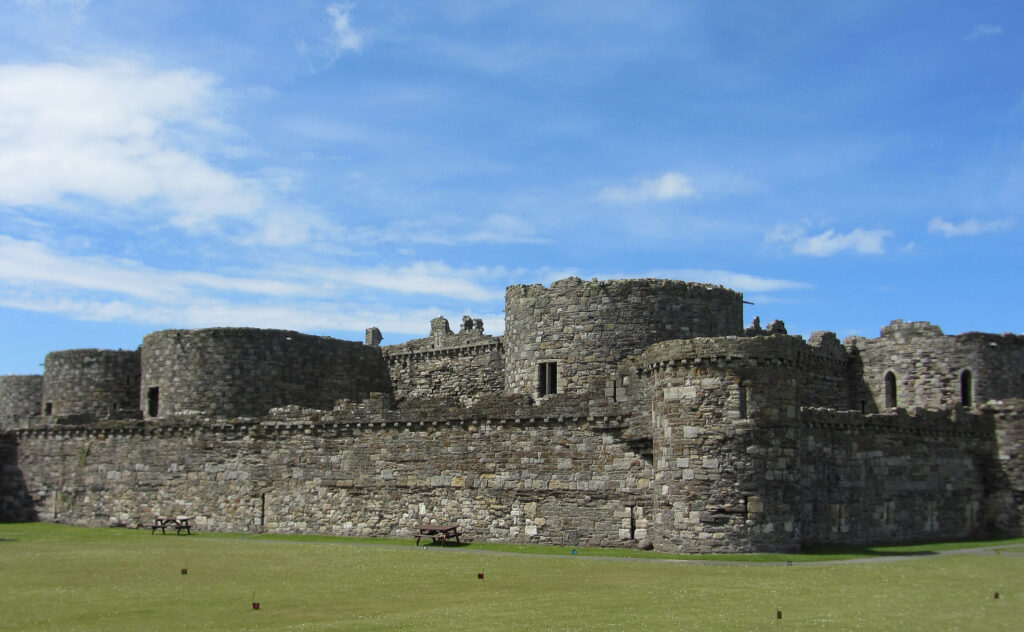
Plas Newydd House and Gardens
Plas Newydd is a historic mansion located on the southern coast of the Isle of Anglesey in Wales, overlooking the Menai Strait. This grand estate is renowned for its architectural elegance, rich history, and picturesque gardens. Today, it is managed by the National Trust and serves as both a historical attraction and a tranquil retreat for nature lovers.
Origin and History
1. Early History:
The site of Plas Newydd has been occupied since at least the 14th century. The current mansion dates back to the late 18th century, though it underwent significant architectural changes over time.
2. Redesign by James Wyatt (18th Century):
In the 1790s, renowned architect James Wyatt redesigned the house in a Gothic Revival style for the Paget family, who became the Marquesses of Anglesey. Wyatt’s work transformed Plas Newydd into a stately home, blending Georgian elegance with medieval-inspired features.
3. The Paget Family:
The house has been the ancestral seat of the Paget family since the early 18th century. Henry Paget, the 1st Marquess of Anglesey, played a key role in the Battle of Waterloo as the commander of the British cavalry. A room in the house commemorates his military achievements.
4. 20th Century Renovations:
In the 1930s, the 6th Marquess commissioned artist Rex Whistler to create a monumental mural in the dining room. This fantastical work, depicting an imagined Italianate landscape, remains one of the house’s most celebrated features.
5. National Trust Ownership:
In 1976, the National Trust took ownership of Plas Newydd, preserving its rich history and stunning grounds for the public.
Key Features of the House
• Rex Whistler Mural:
The dining room features a 58-foot-long mural by Rex Whistler, considered one of his masterpieces. The trompe-l’œil painting is filled with whimsical details and creates an illusion of depth.
• Waterloo Exhibition:
A dedicated room displays memorabilia from the Battle of Waterloo, including the prosthetic leg worn by the 1st Marquess of Anglesey after losing his leg in battle.
• Fine Interiors:
The house’s interiors showcase Georgian furnishings, period paintings, and personal items from the Paget family.
Gardens
The gardens at Plas Newydd are a major attraction, celebrated for their variety, beauty, and integration with the surrounding landscape. They were designed with influence from notable landscape gardeners of the 18th and 19th centuries.
1. Italianate Terrace:
This formal terrace offers stunning views over the Menai Strait and Snowdonia. It is planted with colorful herbaceous borders and includes elegant stonework and statues.
2. Woodland Walks:
The gardens feature extensive woodland trails, with paths winding through native and exotic trees. These walks provide serene views and opportunities for wildlife spotting.
3. Rhododendrons and Azaleas:
Plas Newydd is renowned for its collection of rhododendrons and azaleas, which create vibrant displays of color in late spring and early summer.
4. Hydrangea Walk:
This walk showcases an impressive variety of hydrangeas, leading to a secluded part of the estate.
5. Dell Garden:
A sheltered area filled with shade-loving plants and a tranquil stream, the Dell Garden offers a peaceful retreat.
6. Waterfront Location:
The gardens extend to the edge of the Menai Strait, where visitors can enjoy panoramic views of the water and the dramatic mountains of Snowdonia beyond.
7. Seasonal Highlights:
• Spring: Blooming bulbs and early rhododendrons.
• Summer: Lush borders and vibrant hydrangeas.
• Autumn: Golden woodland foliage.
• Winter: Structural beauty of trees and frosted landscapes.
Cultural and Historical Significance
Plas Newydd embodies centuries of Welsh and British history, from its connection to the Battle of Waterloo to its artistic and horticultural achievements. The estate is a testament to the blending of natural beauty and human creativity, making it a cherished part of Anglesey’s heritage.
Legacy
Today, Plas Newydd House and Gardens is a place of historical education and serene beauty, drawing visitors for its architecture, art, and exquisite natural surroundings. It remains a cornerstone of Anglesey’s cultural and tourist attractions.
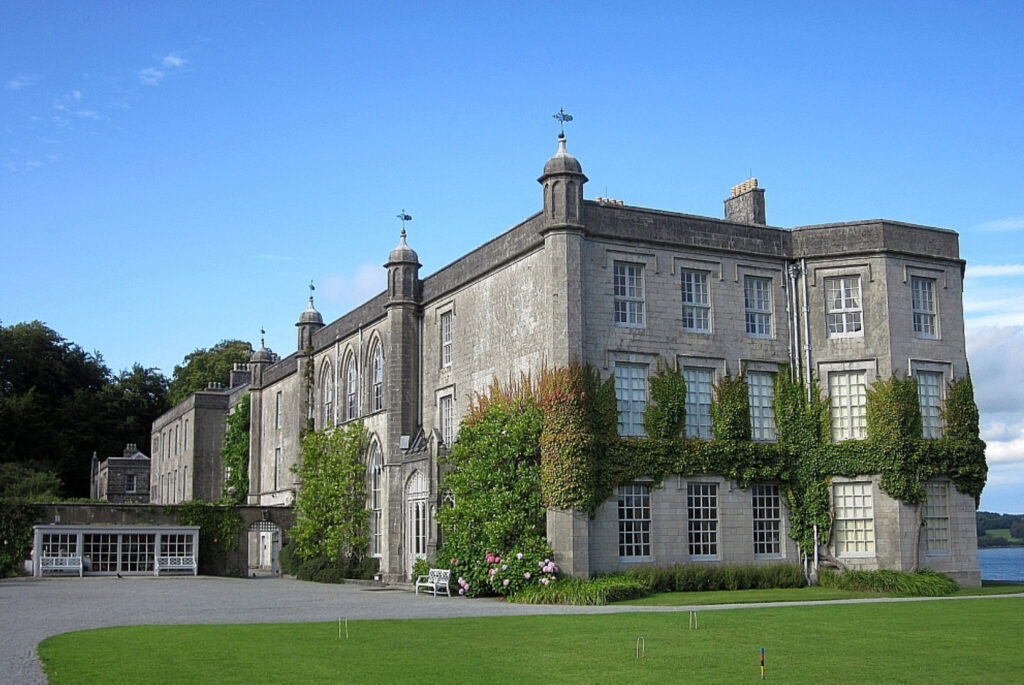
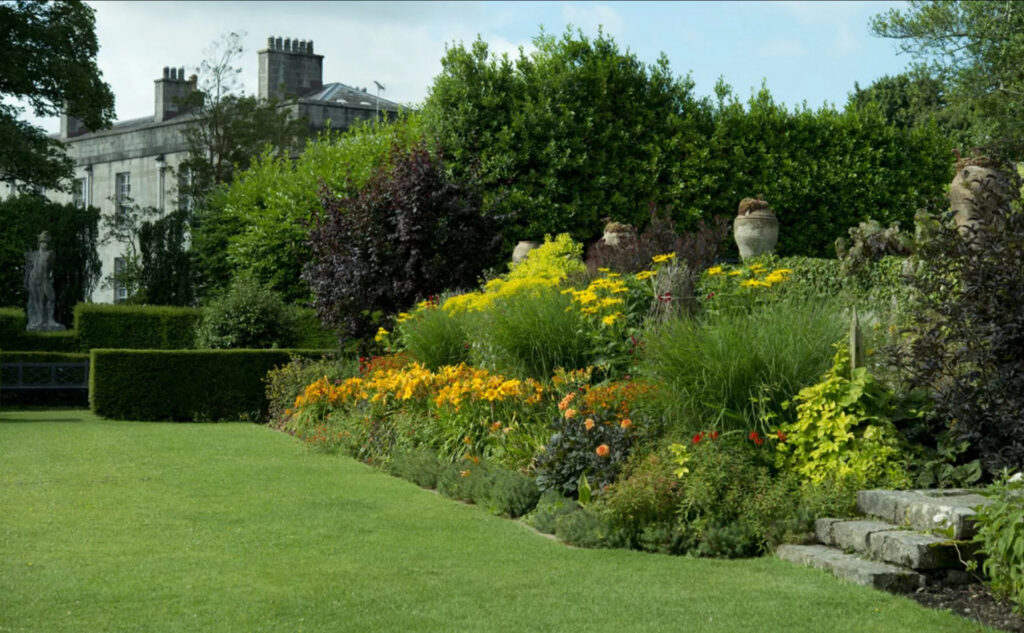
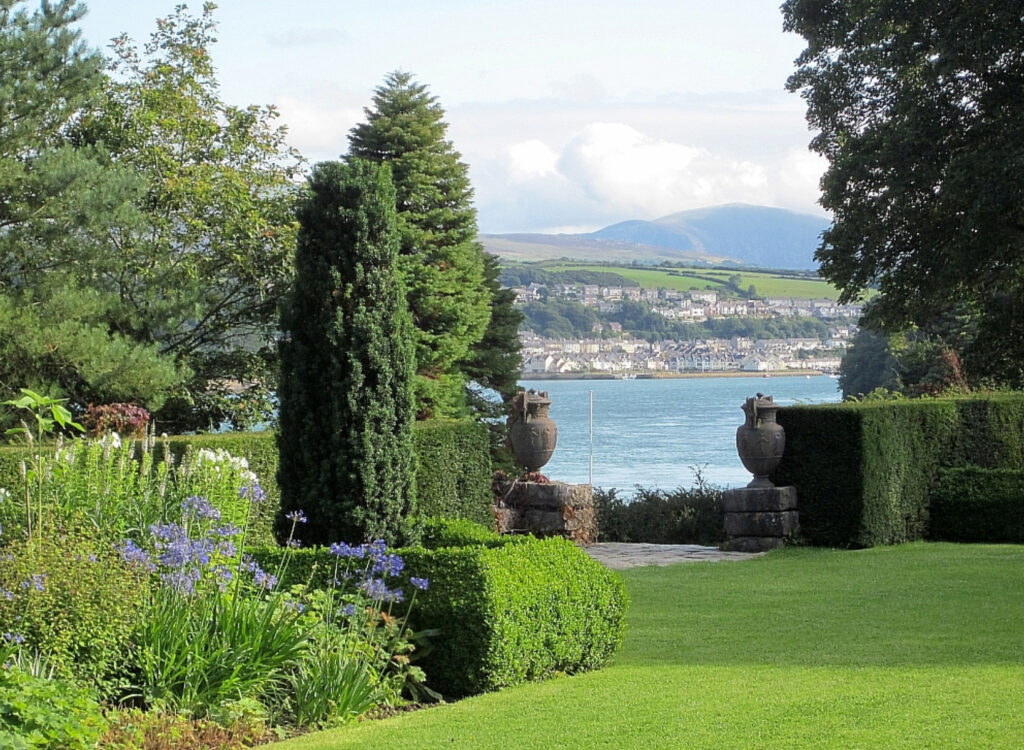
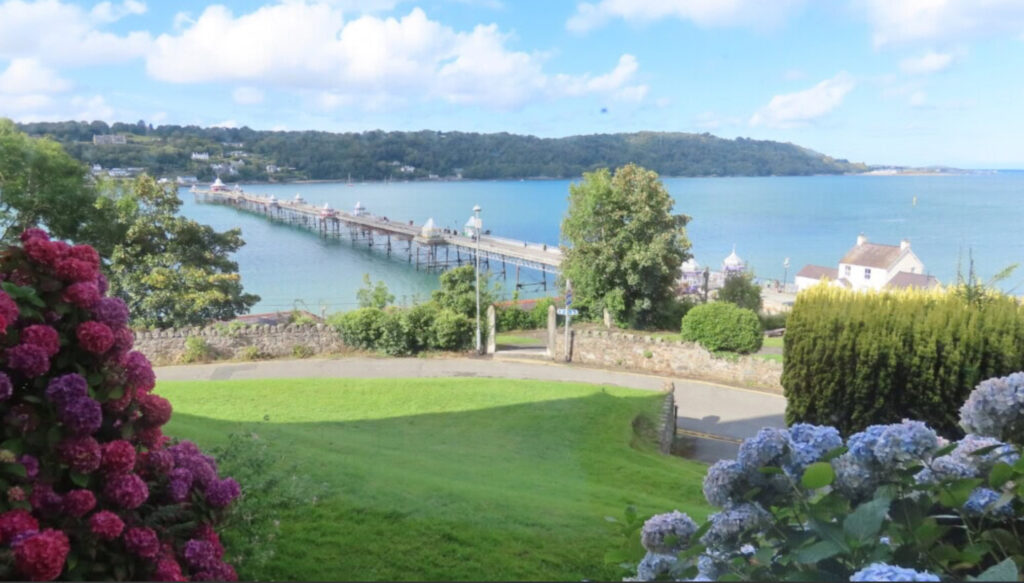
Holyhead: Origin and History
Holyhead (Caergybi in Welsh) is the largest town on the Isle of Anglesey, located on Holy Island (Ynys Gybi), which is connected to the main island by the Four Mile Bridge and a causeway built in the 19th century. As an important port town, Holyhead has a rich history tied to maritime trade, transportation, and ancient cultures.
Ancient Origins
1. Prehistoric Settlements:
Holyhead’s history dates back thousands of years, with evidence of human activity during the Neolithic period. The area features prehistoric burial mounds and standing stones, such as the Ty Mawr Standing Stone.
2. Celtic and Roman Periods:
• Holyhead was an important settlement for the ancient Celts. The island’s name, “Holy Island,” likely reflects its early religious significance.
• During the Roman occupation of Britain, Holyhead became a key outpost. The Caer Gybi Roman Fort, parts of which still exist today, was established to protect the western coast of Roman Britain from Irish raiders.
Early Medieval Period
• Saint Cybi:
The town takes its Welsh name, Caergybi (“Fort of Cybi”), from Saint Cybi, a 6th-century Christian missionary who established a monastery within the ruins of the Roman fort. The remains of St. Cybi’s Church, built on this site, can still be seen and are a focal point of Holyhead’s historic heritage.
• Religious Significance:
Holyhead became a center of Christian worship, with Saint Cybi’s influence contributing to its status as a “holy” site.
Medieval and Early Modern History
1. Maritime Connections:
Holyhead’s location made it a natural hub for maritime activity. During the medieval period, it served as a crossing point to Ireland.
2. Welsh and English Rule:
Holyhead, like the rest of Anglesey, experienced shifts in control between Welsh princes and English kings during the Middle Ages. It remained an important trading and fishing port.
Industrial Era and Maritime Development
1. Port and Transportation Growth:
In the 19th century, Holyhead became a major port for travel and trade between Britain and Ireland. The construction of the Menai Suspension Bridge (1826) by Thomas Telford improved access to Holyhead, further solidifying its role as a transportation hub.
2. Holyhead Harbour:
The development of Holyhead Harbour was a key milestone. A massive breakwater, completed in 1873, created a safe anchorage for ships. At 1.7 miles (2.7 km) long, it remains one of the longest breakwaters in Europe.
3. Railway Connection:
The arrival of the Chester and Holyhead Railway in 1848 connected Holyhead to mainland Britain, boosting its economic and strategic importance.
4. Irish Mail Service:
Holyhead became the primary terminal for mail and passenger services between London and Dublin. The Holyhead-Dublin ferry service remains a vital link between the UK and Ireland.
Modern History
1. World Wars:
Holyhead played a strategic role during both World Wars due to its port facilities and proximity to Ireland.
2. Tourism and Local Economy:
In the 20th century, Holyhead diversified its economy to include tourism. Attractions like the South Stack Lighthouse, rugged coastal scenery, and wildlife draw visitors to the area.
3. Renewable Energy:
Holyhead is part of Anglesey’s push toward renewable energy, with initiatives such as offshore wind farms contributing to the local economy.
Key Landmarks and Features
1. St. Cybi’s Church and Roman Fort:
A historic site that blends Roman and early Christian heritage.
2. South Stack Lighthouse:
Located on a dramatic clifftop, it offers stunning views of the Irish Sea and is a popular spot for birdwatching.
3. Holyhead Breakwater:
A remarkable engineering feat providing shelter for ships.
4. Anglesey Coastal Path:
Holyhead is a gateway to this long-distance trail, which circles the island and highlights its natural beauty.
Cultural Significance
Holyhead represents a blend of ancient and modern cultures, from its Celtic and Roman roots to its role as a transportation hub. The town is a microcosm of Anglesey’s history, combining maritime tradition, religious heritage, and natural beauty.
Legacy
Today, Holyhead remains vital as a ferry port linking Wales to Ireland and as a center for tourism and regional trade. Its historical significance and breathtaking surroundings ensure it remains a focal point for understanding Anglesey’s broader history.
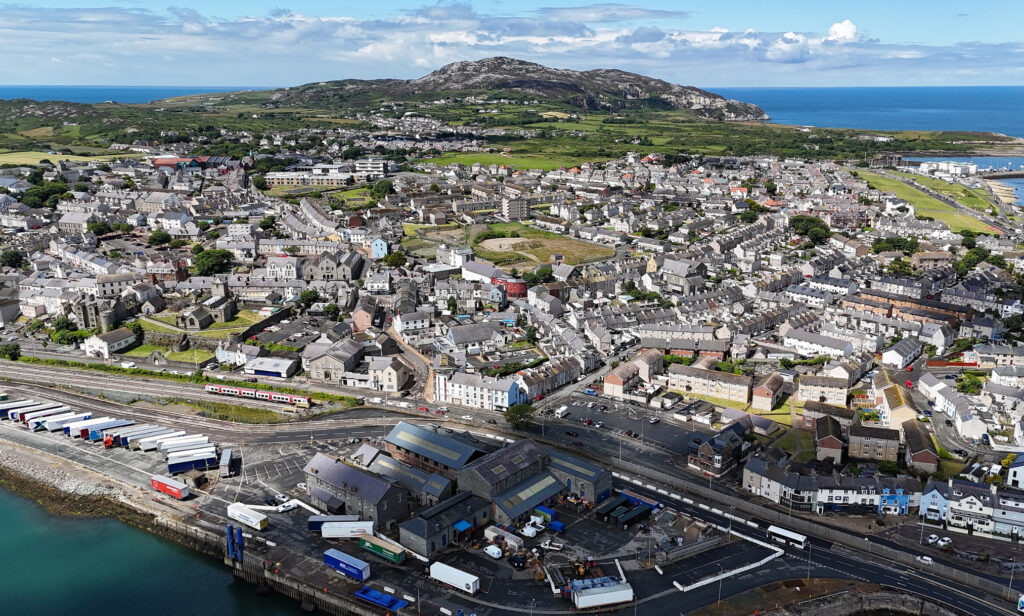
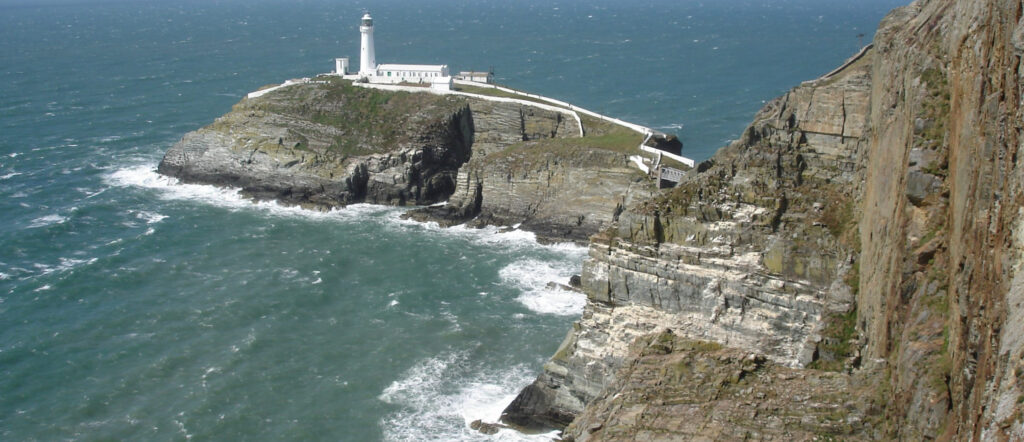
Three-Day Itinerary for Anglesey Island (Including Holyhead)
This three-day itinerary provides a comprehensive exploration of Anglesey Island, combining its historical landmarks, natural beauty, and local food specialties. It includes Holyhead and a luxurious accommodation for a memorable stay.
Day 1: History and Coastal Charm
Morning
1. Beaumaris Castle
• Begin your trip at Beaumaris Castle, a UNESCO World Heritage Site and one of the finest examples of medieval concentric castle design.
• Walk along the moat and enjoy views of the Menai Strait.
2. Beaumaris Town and Pier
• Stroll through the charming town of Beaumaris, with its boutique shops and Georgian architecture.
• Stop by the pier for scenic views or join a boat tour to Puffin Island to see wildlife.
Lunch
• Local Specialty:
Dine at The Midland Tapas and Wine Bar in Beaumaris. Try Anglesey mussels or a platter of Welsh cheeses.
Afternoon
3. Plas Newydd House and Gardens
• Visit this elegant stately home overlooking the Menai Strait.
• Admire the Rex Whistler mural inside and stroll through the gardens, known for their Italianate terraces and woodland walks.
4. Menai Bridge and Britannia Bridge
• Stop at the Menai Suspension Bridge, an iconic 19th-century engineering marvel.
• Take a scenic walk along the Belgian Promenade for views of the bridges and Strait.
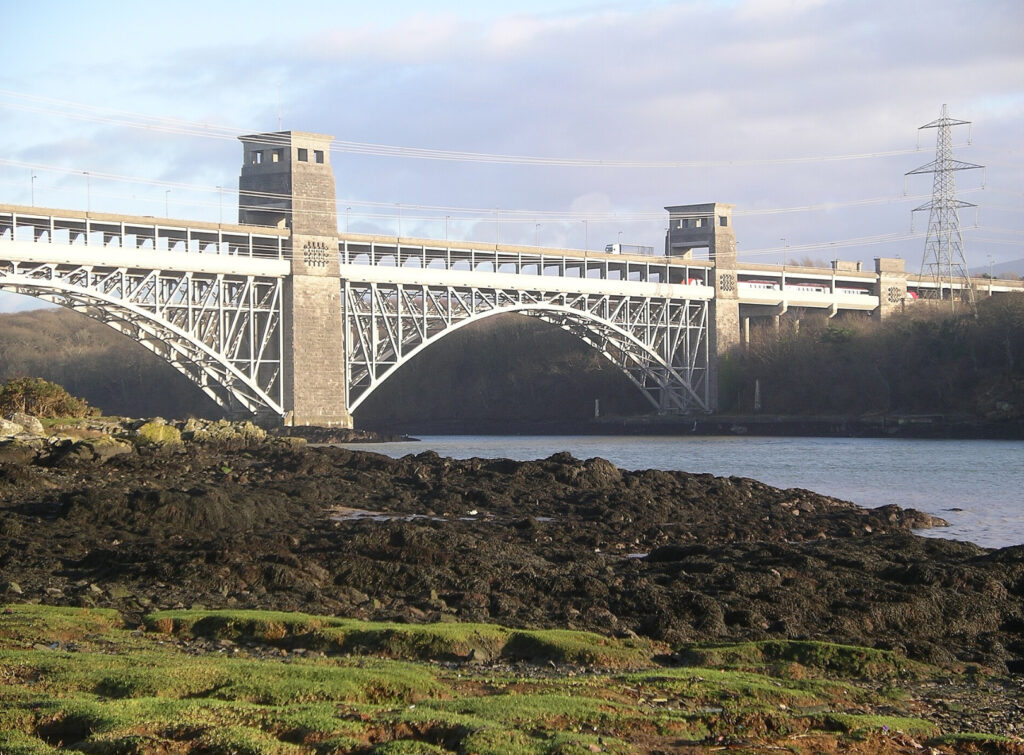
Dinner
• Local Specialty:
Head to The Marram Grass near Newborough for a modern take on Welsh cuisine, featuring locally sourced lamb or seafood.
Day 2: Nature and Holyhead
Morning
1. Newborough Beach and Llanddwyn Island
• Spend your morning exploring Newborough Beach, one of Anglesey’s most beautiful spots.
• Walk to Llanddwyn Island, a tidal island rich in history and Welsh mythology. Discover its lighthouse and connections to St. Dwynwen, the Welsh patron saint of lovers.
2. Anglesey Sea Zoo
• Visit Wales’s largest aquarium, featuring local marine life like seahorses, rays, and lobsters.
Lunch
• Local Specialty:
Have lunch at the Anglesey Sea Zoo Café, known for its fresh seafood, including Anglesey crab sandwiches.
Afternoon
3. Holyhead Breakwater and Harbour
• Walk along the Holyhead Breakwater, the longest in Europe, for sweeping views of the Irish Sea.
• Explore Holyhead’s bustling port and its maritime history.
4. South Stack Lighthouse and Cliffs
• Visit the iconic South Stack Lighthouse, perched on dramatic cliffs.
• Explore the surrounding nature reserve, a hotspot for birdwatching and coastal scenery.
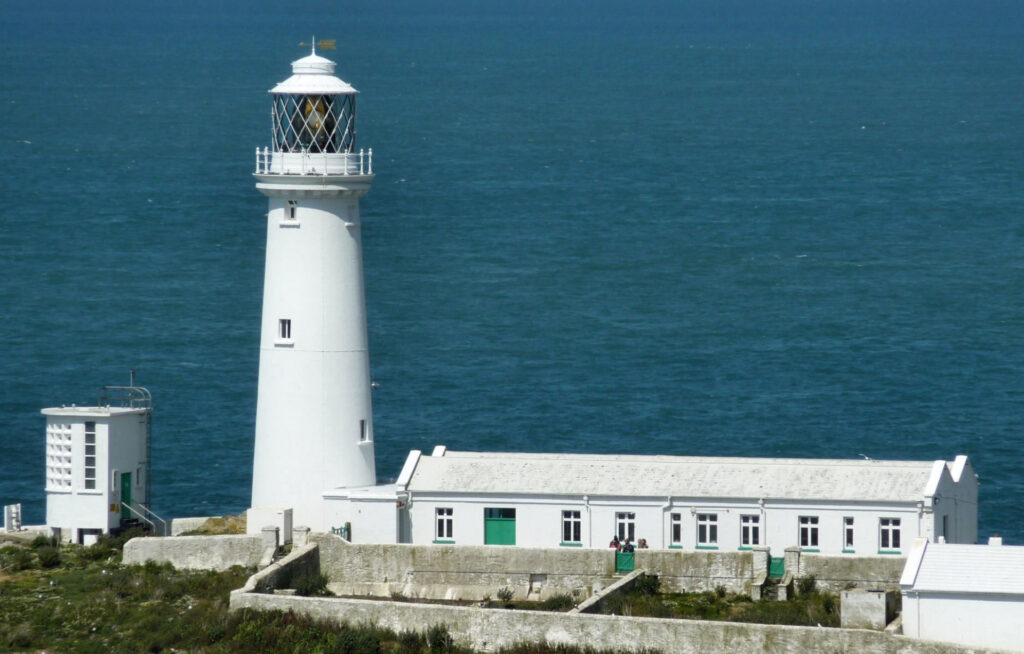
Dinner
• Local Specialty:
Enjoy dinner at Catch 22 Brasserie in Valley, featuring dishes like Welsh rarebit and local seafood.
Day 3: Adventure and Unique Landscapes
Morning
1. Parys Mountain
• Start your day exploring the surreal landscapes of Parys Mountain, a historic copper mine with vibrant red, orange, and yellow hues.
2. Anglesey Coastal Path (Amlwch to Cemaes)
• Walk a scenic stretch of the Anglesey Coastal Path, offering dramatic sea views and opportunities to spot wildlife.
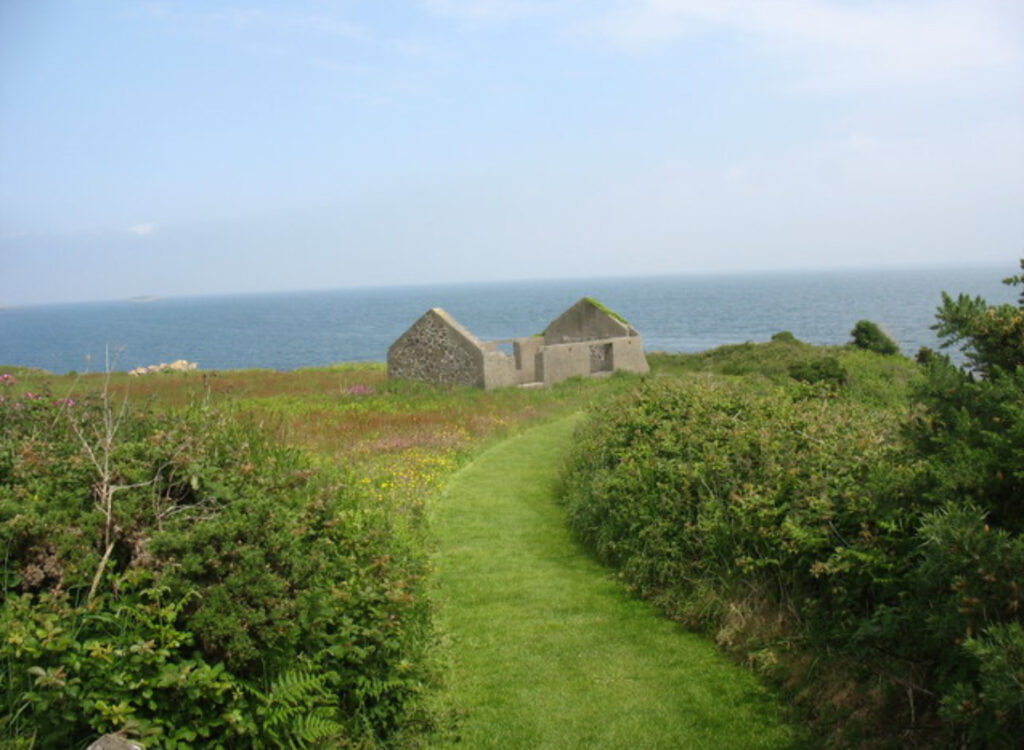
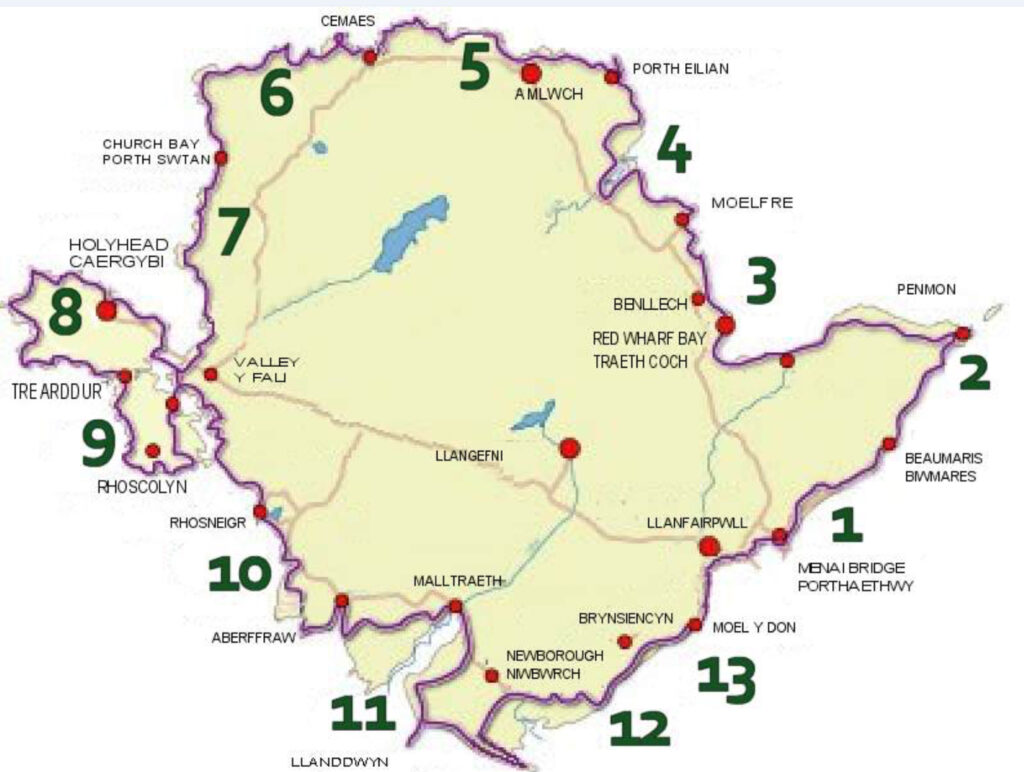
Lunch
• Local Specialty:
Stop for lunch at The Lobster Pot near Church Bay, known for its fresh lobster and seafood platters.
Afternoon
3. Cemaes Bay
• Visit this picturesque village, ideal for a relaxing beach walk or exploring rock pools.
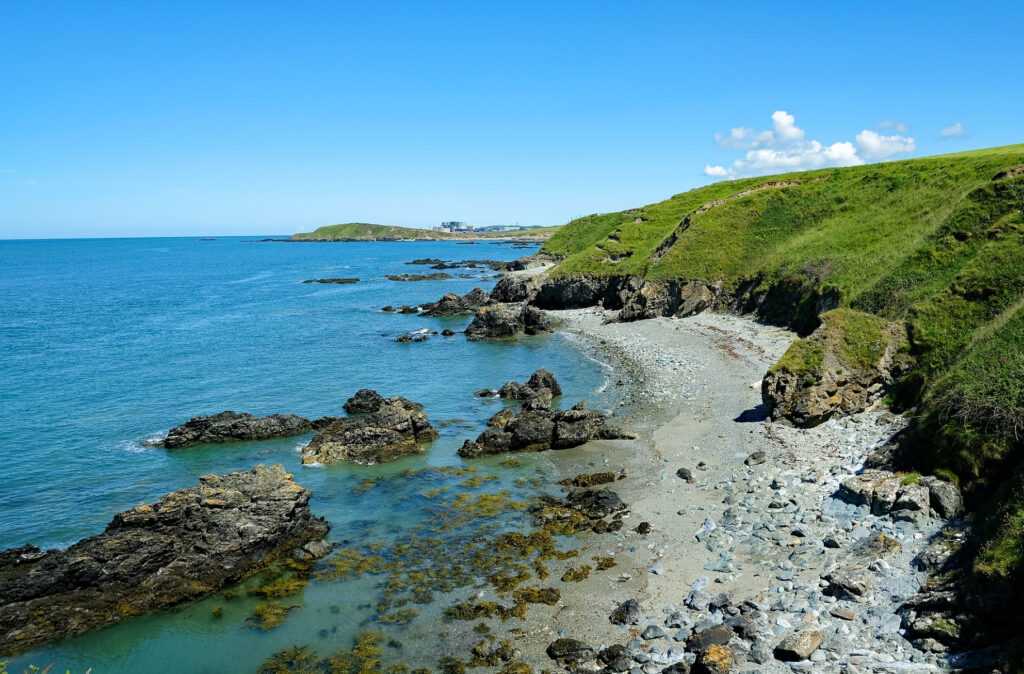
4. Llynnon Mill
• End your trip at Llynnon Mill, the only working windmill in Wales. Learn about Anglesey’s agricultural history and enjoy freshly baked goods from the café.
Dinner
• Local Specialty:
Return to The White Eagle near Rhoscolyn for a fine dining experience with seasonal Welsh ingredients and local ales.
Unique Accommodation
Château Rhianfa
• Location: Situated along the Menai Strait, about 30 minutes from Holyhead.
• Features: This luxurious Gothic-style mansion offers elegant rooms, a spa, and breathtaking views of Snowdonia.
• Highlights: Guests can enjoy fine dining, private gardens, and unique architectural details that enhance the charm of their stay.
Summary of Highlights
• Historical Sites: Beaumaris Castle, Plas Newydd, South Stack Lighthouse, and Llynnon Mill.
• Natural Wonders: Newborough Beach, Llanddwyn Island, Parys Mountain, and Anglesey Coastal Path.
• Local Cuisine: Anglesey mussels, lamb stew, crab sandwiches, lobster, and Welsh rarebit.
• Accommodation: Château Rhianfa for an unforgettable and luxurious stay.
This itinerary balances Anglesey’s rich history, natural beauty, and culinary delights, offering a complete experience of the island.

